
Many Windows users are having an issue with their computer. They are experiencing a blue screen of death error with the error code of ndis.sys occurring randomly on their Windows system.
This is very frustrating. You can’t use your Windows computer because of this blue screen error. But don’t worry. It can be fixed…
Try these fixes!
The following are a few methods that have helped many Windows users fix their ndis.sys error. You don’t have to try them all; just work your way down the list until you find the one that works for you.
- Check your computer for viruses or malware
- Temporarily disable your security software
- Update your device drivers
- Run System File Checker
Method 1: Check your computer for viruses or malware
You may get this error because there are viruses or malware on your computer. To get rid of them, you should run your security software and scan your computer. After that, restart your computer and see if your computer runs normally.
Method 2: Temporarily disable your security software
It is also possible that your ndis.sys blue screen error results from your security software itself. This error sometimes occurs because of software conflicts caused by an antivirus or firewall. To see if that’s the problem for you, temporarily disable your security program and check if the problem persists. (Consult the documentation of your security software for instructions on disabling it.)
If this resolves your problem, contact the vendor of your security software and ask them for advice, or install a different security solution.
Method 3: Update your device drivers
You may get this ndis.sys blue screen error if you’re using a wrong device driver or it’s out of date. You should make sure your drivers are updated. If you don’t have the time, patience or skills to update your drivers manually, you can do it automatically with Driver Easy.
Driver Easy will automatically recognize your system and find the correct drivers for it. You don’t need to know exactly what system your computer is running, you don’t need to risk downloading and installing the wrong driver, and you don’t need to worry about making a mistake when installing.
You can download and install your drivers by using either Free or Pro version of Driver Easy. But with the Pro version it takes only 2 clicks (and you get full support and a 30-day money back guarantee).
To use Driver Easy to fix this error:
1) Make sure you’ve turned off your computer.
2) Enter safe mode of your Windows system:
a) If you’re using Windows 7:
i. Press the power button of your computer. Right after that, press the F8 key on your keyboard until you see a list of Advanced Boot Options.
ii. Press the down arrow key until Safe Mode with Networking is highlighted, then press Enter on your keyboard.

b) If you’re on Windows 8 or 10:
i. Turn on your computer, and then when your Windows starts to load, turn it off immediately. Do this until you see a message that says “Preparing Automatic Repair“.

ii. Click Advanced options.
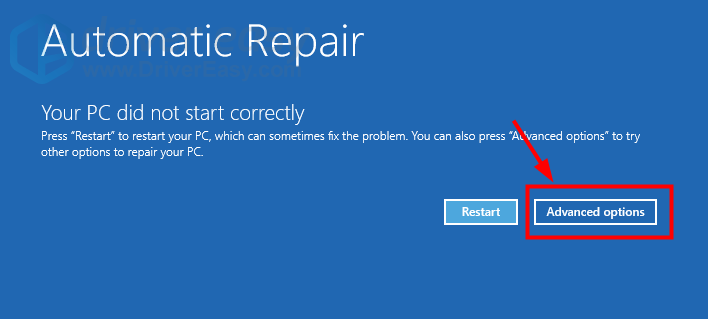
iii. Select Troubleshoot.

iv. Select Advanced options.
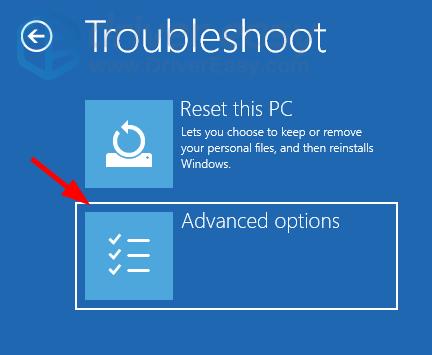
v. Select Startup Settings.
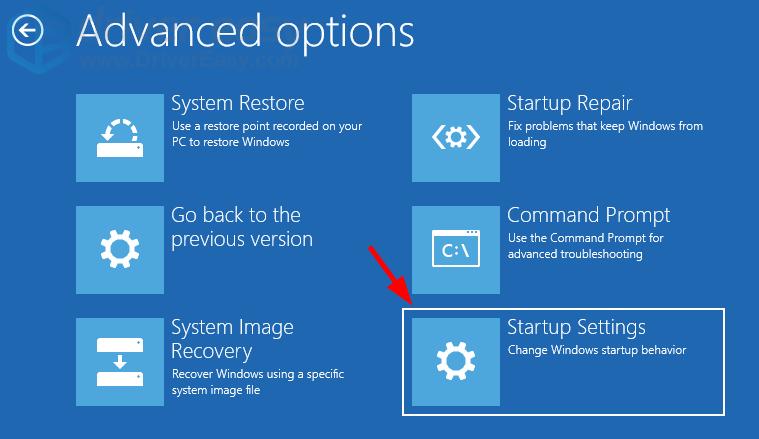
vi. Click Restart.
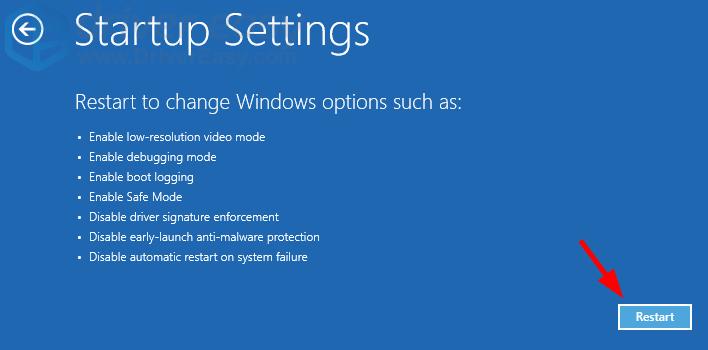
vii. Press 5 on your keyboard (to select Enable Safe Mode with Networking).

3) Download and install Driver Easy.
4) Run Driver Easy and click the Scan Now button. Driver Easy will then scan your computer and detect any problem drivers.
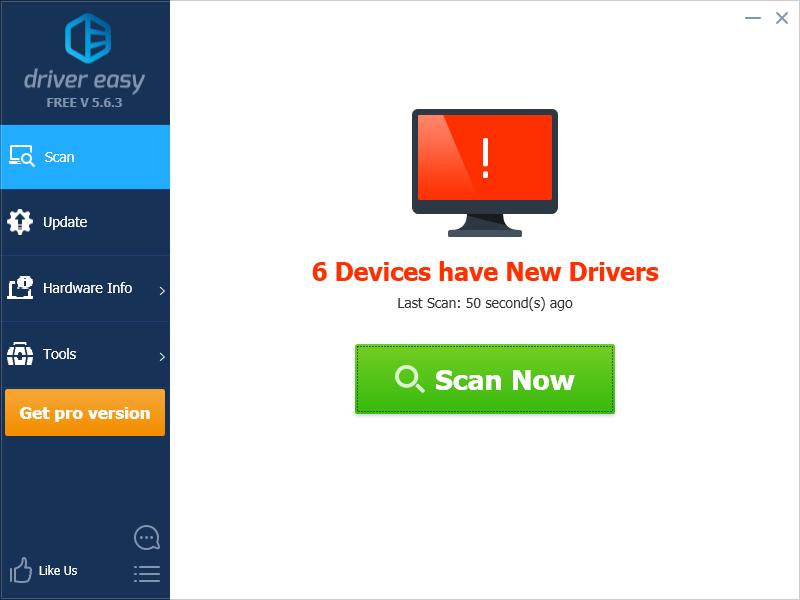
5) Click the Update button next to each of your devices to download the latest and correct driver for it, then you can manually install it. You can also click the Update All button at the bottom right to automatically update all outdated or missing drivers on your computer (this requires the Pro version — you will be prompted to upgrade when you click Update All).

6) Restart your computer, then check to see if this fixes your blue screen error.
Hopefully it does. But if not, you may need to…
Method 4: Run System File Checker
Your ndis.sys blue screen error may result from corrupted critical system files. You can run the Windows System File Checker utility to verify and repair your system files. To run System File Checker:
1) Boot your computer from your Windows installation media.
2) Enter your language and region preferences and click Next.
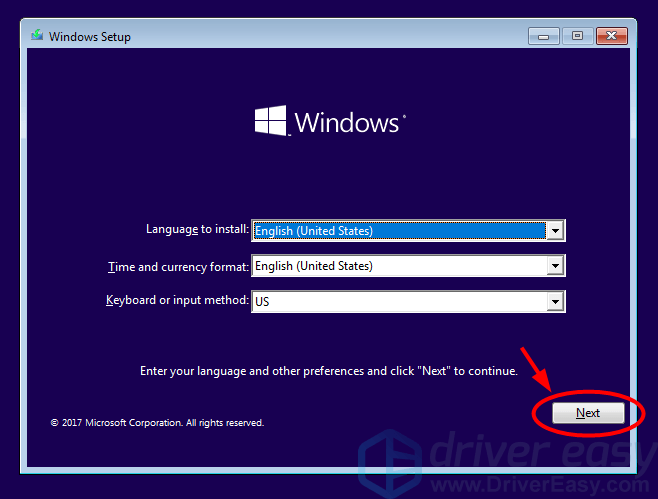
3) Click Repair your computer.
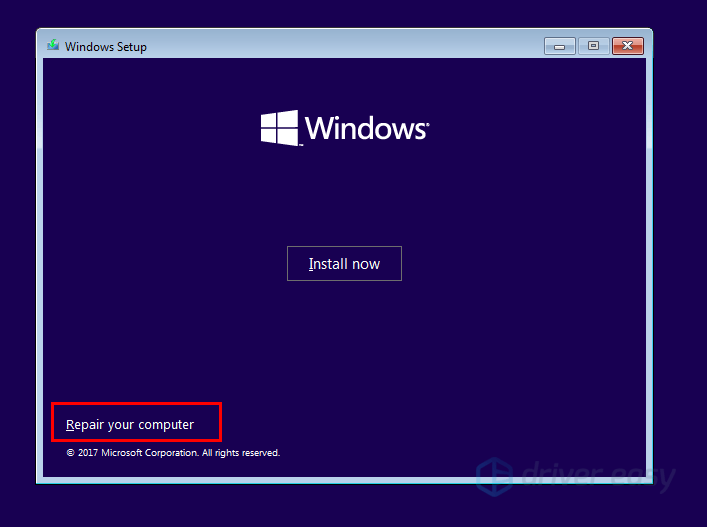
4) Open Command Prompt:
a) If you’re using a Windows 10 installation media:
i. Select Troubleshoot.
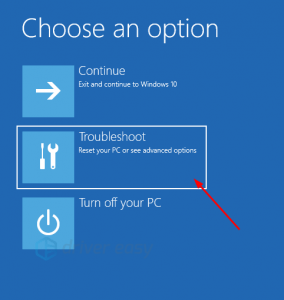
ii. Select Command Prompt.

b) If you’re using a Windows 7 media:
i. Select the first item (Use recovery tools …), then select your Windows 7 system from the list of the system. After that, click Next.
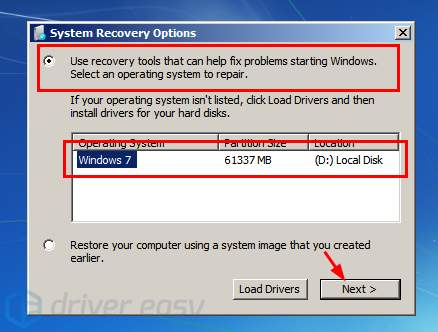
ii. Click Command Prompt.
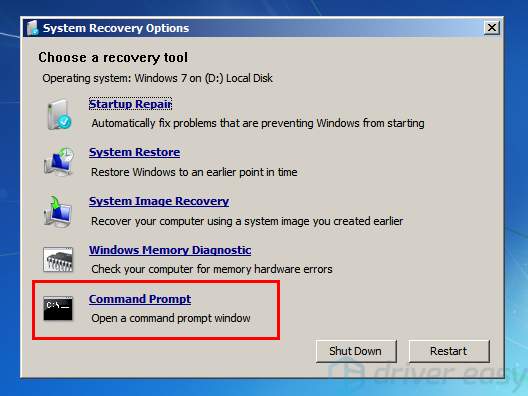
5) Type “sfc /scannow” and press Enter on your keyboard. The System File Checker utility will then begin to scan and repair your computer.
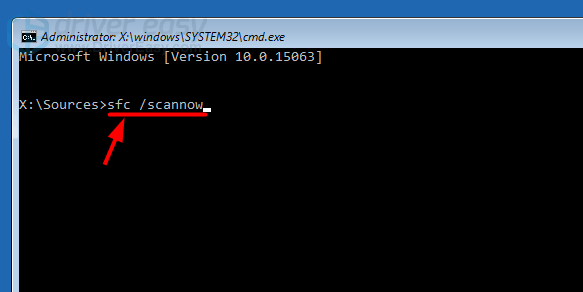
6) Exit Command Prompt and restart your computer. Then check to see if this fixes your ndis.sys blue screen error.





